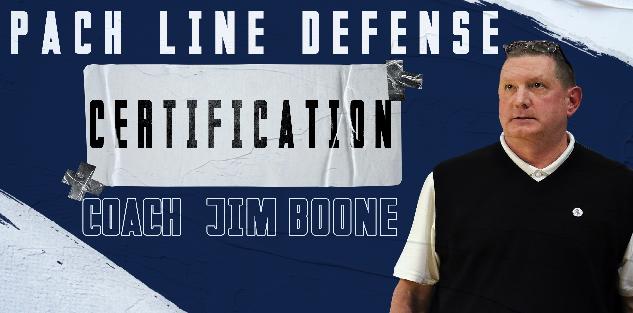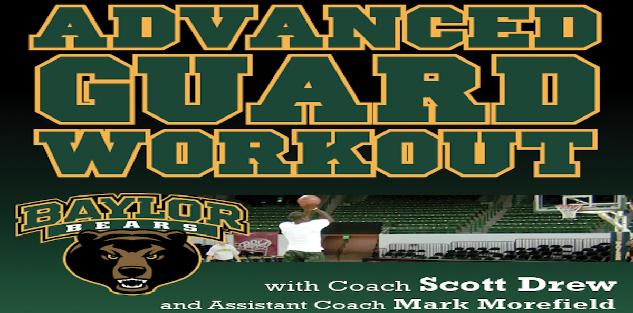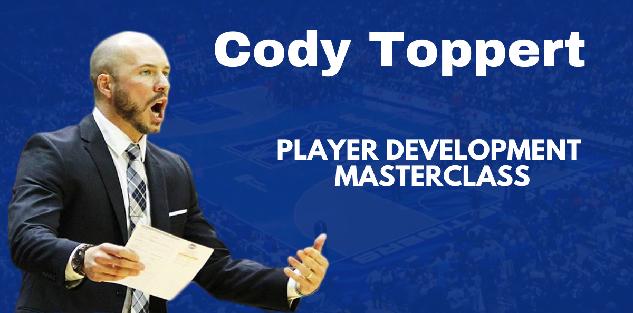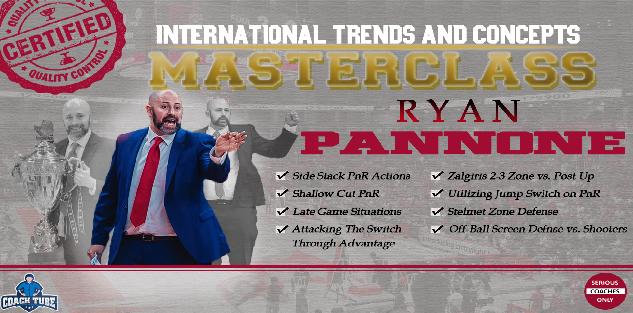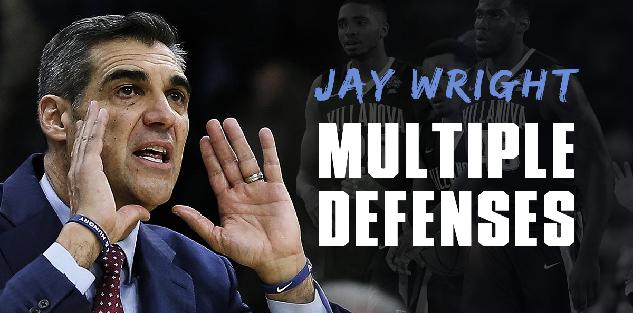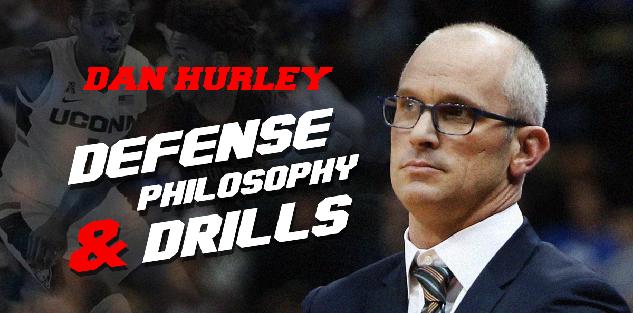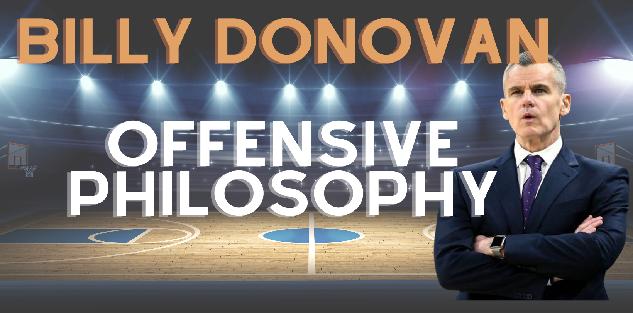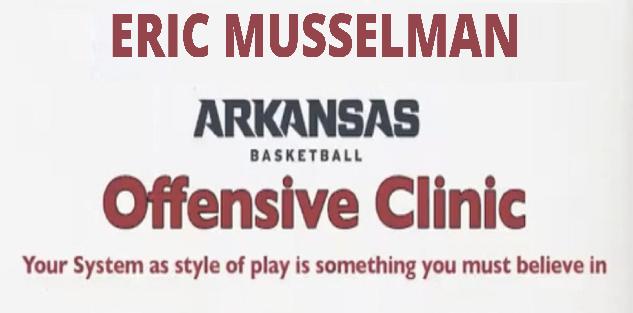Featured courses
- Two Great Game Situational Workouts For the Basketball Offseason by Grant Young
- Two Reads Basketball Players Must Understand Before Executing the Ball-Screen by Grant Young
- Two of LSU Coach Kim Mulkey’s Game-Winning Inbounds Plays by Grant Young
- Three Effective Early-Season Defensive Basketball Drills by Grant Young
- Four Essential Tips For Basketball’s 1-3-1 Zone Defense by Grant Young
- Four Zone Defense Drills to Strengthen Your Team by Grant Young
- How to Beat the Three Most Common Pick and Roll Coverages by Grant Young
- Two Drills to Improve Shooting at the Start of the Basketball Season by Grant Young
- Core Basketball Principles That Dallas Mavericks Coach Sean Sweeney Teaches by Grant Young
- Three Competitive Shooting Drills For Your Basketball Team by Grant Young
- How To Teach The ‘I’ Generation of Basketball Players by Grant Young
- Three Elite Drills to Begin a Basketball Practice With by Grant Young
- How to Build a Championship-Winning Basketball Team Culture by Grant Young
- Two of Texas Women’s Basketball Coach Vic Schaefer’s Tips For Team Culture by Grant Young
- Atlanta Dream WNBA Coach Brandi Poole’s Four Sets for Secondary Offense by Grant Young
- NC State Basketball Coach Brett Nelson’s 4 Crucial Point Guard Qualities by Grant Young
- Kentucky Coach Mark Pope’s Five Guard Rules For Offense by Grant Young
- McNeese State Basketball Coach Will Wade’s 4 Core Pillars by Grant Young
- 4 Tips To Instantly Improve Your Free Throw Shooting by Tyler Linderman
- Assemble a Championship-Caliber Basketball Rotation by Brandon Ogle
- Two of UConn Coach Dan Hurley’s Key Defensive Drills by Grant Young
- Four Post Moves All Basketball Forwards Should Have In Their Bag by Grant Young
- Four of Baylor Coach Nicki Collen’s Midseason Pick and Roll Adjustments by Grant Young
- WNBA Legend Sue Bird’s Two Tips For Attacking on Offense by Grant Young
- Houston Coach Kelvin Sampson’s Three Keys for Building a Basketball Program by Grant Young
- Two of Tom Izzo’s Top Michigan State Defensive Drills by Grant Young
- Four of Olympic Gold Medalist Coach Mechelle Freeman’s Relay Race Strategies by Grant Young
- Three Key Strategies Will Wade Uses to Build a Dominant Team by William Markey
- Five UConn Huskies Men’s Basketball Plays That You Can Use by Grant Young
- Three Tips for Maintaining Team Culture at the End of a Basketball Season by Grant Young
- Three Dribble Drive Motion Drills to Teach Your Basketball Team by Grant Young
- Three Dribbling Drills For Non-Primary Ball Handlers by Grant Young
- Four Advanced Ball Handling Drills For Basketball Guards by Grant Young
- Three Tips to Sharpen Your Post Player’s Footwork in Basketball by Grant Young
- These Three Pick and Roll Drills Are Crucial For Any Ball Screen Offense by Grant Young
- Three Closeout Drills to Improve Basketball Shooting Defense by Grant Young
- Three Tips to Perfect the Packline Defense in Basketball by Grant Young
- Four Keys to Executing the Read and React Offense in Basketball by Grant Young
- Three Tips to Develop Elite Basketball Shooters by Grant Young
- Three Crucial Keys to Executing the 5 Out Offense in Basketball by Grant Young
- These Three Offensive Sets Will Help You Beat Any Zone Defense by Grant Young
- Three Transition Basketball Drills To Play With More Pace by Grant Young
- Three 5 Out Offense Drills Any Basketball Coach Can Use by Grant Young
- Four Vital Techniques for a Motion Offense in Basketball by Grant Young
- Three Baseline Inbounds Plays To Win Your Basketball Team Games by Grant Young
- Four Drills For Sharpening the European Ball Screen Offense by Grant Young
- Three Positioning Tricks For a Basketball Zone Offense by Grant Young
- Three Rules to Perfecting Basketball's Lock Left Defensive System by Grant Young
- UCLA WBB Coach Cori Close’s Two Keys to Winning the Mental Game by Grant Young
- Four of Alabama Coach Nate Oats’ Favorite Basketball Drills by Grant Young
- Three Ways To Turn Transition Offense in Basketball Into Points by Grant Young
- Three Drills to Master Basketball's Pack Line Defense by Grant Young
- Three Transition Defense Drills to Halt Fast Breaks by Grant Young
- Four Offensive Rebounding Drills to Win Second Possessions by Grant Young
- 4 Defensive Technique Drills from Boston Celtics Assistant Coach Brandon Bailey by Marek Hulva
- 5 Drills to Improve Ball Handling by Tyler Linderman
- 13 FUNNY BASKETBALL GIFS by Alex
- BASKETBALL SPEED AND AGILITY: 8 QUESTIONS FOR COACHTUBE EXPERT RICH STONER by Jaycob Ammerman
- Defensive Strategies for Basketball by Ryan Brennan
- 4 Keys To Turning Your Program Into Championship Contender By Dallas Mavericks Coach Sean Sweeney by Marek Hulva
- 5 Components to Creating a Winning Basketball Program by Justin Tran
- Guide to Becoming a Lethal Scorer in Basketball by Justin Tran
- Zone Defense In the NBA Eastern Conference Finals by James Locke
- Mastering Court Mobility: Tips for Effective Movement in Basketball by Justin Tran
- 5 Basketball Shooting Drills: How to Develop a Sharpshooter by James Locke
- 6 Points of Emphasis for a Successful 5 Out Offense by Jaycob Ammerman
- Effective and Efficient Methods to Practice During the Basketball Season by Justin Tran
- Three Great Passing Drills From a Basketball Coaching Legend by Grant Young
- 7 Principles For Perfecting the Princeton Offense in Basketball by Grant Young
- How to Replicate A Modern NBA Offense by Grant Young
- Three Great Two-Ball Dribbling Drills For Basketball Development by Grant Young
- Two Rebounding Drills to Win Your Basketball Team Championships by Grant Young
- How to Improve Your Basketball Team’s Defense With the Shell Drill by Grant Young
- How Baylor Basketball’s Scott Drew Develops Elite Guard Play by Grant Young
- Off-Ball Movement Tips and Strategies: Lessons From the NBA Finals by James Locke
- Player Development: Scott Drew’s Tips for Producing NBA Guards by James Locke
- How to Execute a Spread Offense in Basketball by Grant Young
- Four Quality Quotes From Four Final Four Coaches by Grant Young
- A Guide to the Pack Line Defense by Alex Martinez
- 3 Defensive Build Up Drills to Improve Team Basketball Defense by Grant Young
- Battle of Two Great Coaches: Best Plays from the NBA Finals Contenders by Justin Tran
- 10 Creative Ways Athletic Programs Can Use a Video Board to Raise Money by Coach Williams
- How to Use 3 on 3 to Improve Your Basketball Team by Grant Young
- How to Defend the Pick and Roll by Grant Young
- Mastering Basketball Defense: Techniques, Drills, and Strategies for Success by Justin Tran
- Three Tips From The Coach Who Developed Giannis Antetokoumnpo by Grant Young
- 2023 NBA Draft: Skills and Technique from Top Prospects by Justin Tran
- From College to the Pros: Transitioning the Dribble Drive Offense by Justin Tran
- Positionless Basketball: Redefining Roles on the Court by Justin Tran
- Revolutionize Your Offense: Proven Concepts to Elevate Your Basketball Game by Justin Tran
- 5 Essential Fastbreak Drills Every Basketball Coach Should Know by James Locke
- How to Run a Circle Offense in Basketball by Grant Young
- Game-Changing Strategies: ATO Plays in the EuroLeague and Olympics by Justin Tran
- How to Stand Out at Basketball Tryouts by Grant Young
- How to Improve Your Basketball Team’s Transition Defense by Grant Young
- Indiana Fever GM Lin Dunn’s Two Keys For Women’s Basketball Coaches by Grant Young
- Strength Training Strategies Every Basketball Player Should Have by Grant Young
- A WNBA Basketball Coach’s Four Priorities In Transition Defense by Grant Young
- Three Adjustments to Make When Your Basketball Offense Isn’t Working by Grant Young
- Three Pillars to Applying Defensive Pressure on the Basketball Court by Grant Young
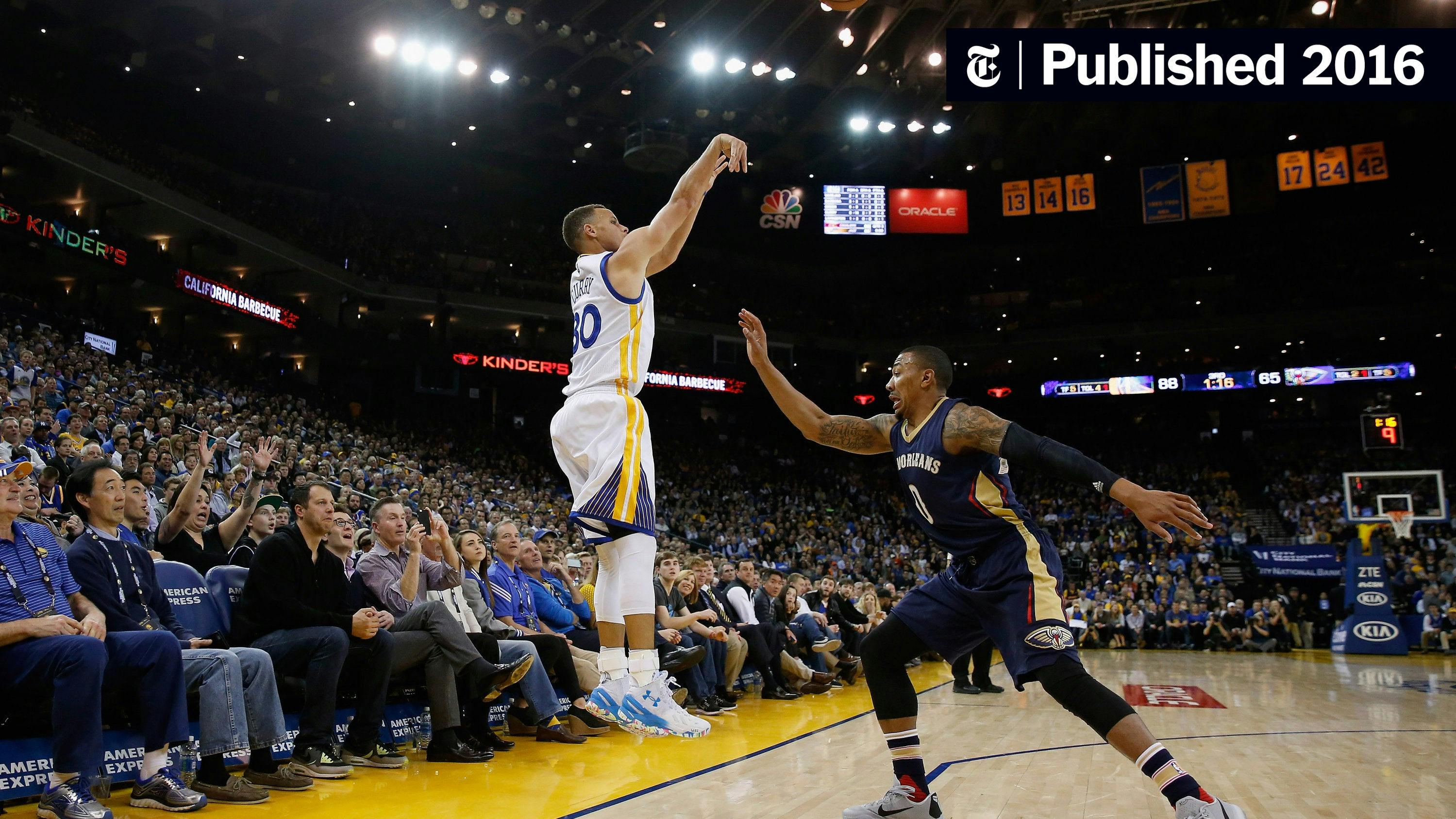
How to Execute a Spread Offense in Basketball
- By Grant Young
Spread offenses are all the rage in the football world right now. Then again, while the term might not hold the same meaning on the basketball court, the truth is that spread offenses have also taken over the basketball world.
Consider the effect that Steph Curry has had on the sport. If you watch a youth basketball game or practice, kids are shooting the ball from further and further away, realizing that, if they can become lethal from three-point range, then their potential skyrockets. And the Caitlin Clark effect is revolutionizing the sport of women’s basketball right now because of her ability to drain the deep three-pointer with ease.
Even big men’s value in the NBA is about them being able to at least threaten a three-point shot in order to free up space in the paint and allow their guard teammates driving opportunities.
But a team full of players who are chucking up threes with reckless abandon is not conducive to success. This is why the basketball community needs coaches like Charlie Henry to harness the game’s evolution into a winning offense.
Coach Henry is currently the head men’s basketball coach at Georgia Southern University, where he has been since 2023. During his first season at the helm, Henry guided the Eagles to an 8-10 record in Sun Belt play and a quarterfinal appearance in the Sun Belt Tournament for the third consecutive season. Under his tutelage, the Eagles set program records in three-pointers (309) and free-throw percentage (.732), finishing the season 27th in the NCAA in three-pointers per game.
Before Georgia Southern, Henry spent four seasons at the University of Alabama and brings to Statesboro over 10 years of coaching experience that includes stops at the Chicago Bulls, Windy City Bulls, and Iowa State, among others.
Coach Henry’s offensive strategy is all about spreading the floor. And his ‘Spread Offense’ course is a perfect way for a basketball coach at any level to learn how to turn their team’s three-point shooting tendencies into a consistent, tried and true offense that doesn’t have to rely on a hot hand to win.
Eliminate Catch
One of the most crucial aspects of succeeding as a spread offense is movement. This means both moving off of the ball and moving with the ball.
Having shooters stationed behind the three-point line is great. But if there’s no dribble penetration, cutting, screening, or passing, then those shooters will have no hope of getting open enough to receive a high-quality look.
Hence why the ball must be in constant motion. Coach Henry discusses this by saying that he wants his players to “eliminate catch”. What he means by this is that he doesn’t want a player to be catching the ball and holding on to it for any longer than .5 seconds before they either shoot, dribble, or pass.
This might sound easier than it is. In truth, it will require the player already predetermining what their initial action (their ‘Plan A’) is going to be if and when they get passed the ball at wherever on the court they’re standing.
Hence why this .5-second rule must be practiced for it to be effective in games. And while there’s no way that your players won’t ever hold a ball for longer than half a second, having this timer in their heads will help produce fast and efficient basketball that will create open looks.
Aggressive Coverage
If your team has proven an ability to shoot and make three-pointers consistently, then that will force opposing defenses to play you aggressively.
This means that defenses will be prioritizing having everybody guarded along the perimeter, with a special focus on the person with the ball in their hands (especially if that’s a guard who is a strong perimeter shooter). This type of aggressive coverage also makes it so two defensive players will briefly be focused on the ball handler in a pick and roll (or fake pick and slide) situation.
With two players focused on the ball at once, this means a player is open elsewhere. And if the ball handler is able to recognize that (which comes through practice and repetition) they should be able to take advantage by making a quick pass to the open player.
Depending on that open player’s skillset, they’ll ideally want to be either driving to the basket or behind the three-point line. Or they can just head to an open pocket of the floor.
Reverse to Wide
Another crucial component of a successful spread offense is what Coach Henry calls a “pop and slash concept”.
This essentially means that, either in a pick-and-roll package or in another typical half-court offensive set, the ball handler should always be conscious of potentially reversing it behind them to a player that has become open on the other side of the wing.
This typically occurs when the ball handler slashes to one side of the court, which opens up space on the wide side of the court.
And when the ball handler is able to recognize this opening, it will create opportunities for open three-pointers and easy slashes into an overly-exposed paint if that ball is made in time.
The important point to note with all of these specific plays and packages is that they’ll take a lot of practice time to master. Because the ball moves so quickly and scoring is dependent on fluid, fast decisions by the person with the ball in their hands, having team chemistry and players understanding each other is paramount to success.
Which is to say that these packages must be drilled just as much as shooting during practices. While players may not like it at first, they’ll be thanking you for all the open looks these reps provide when it matters most.

